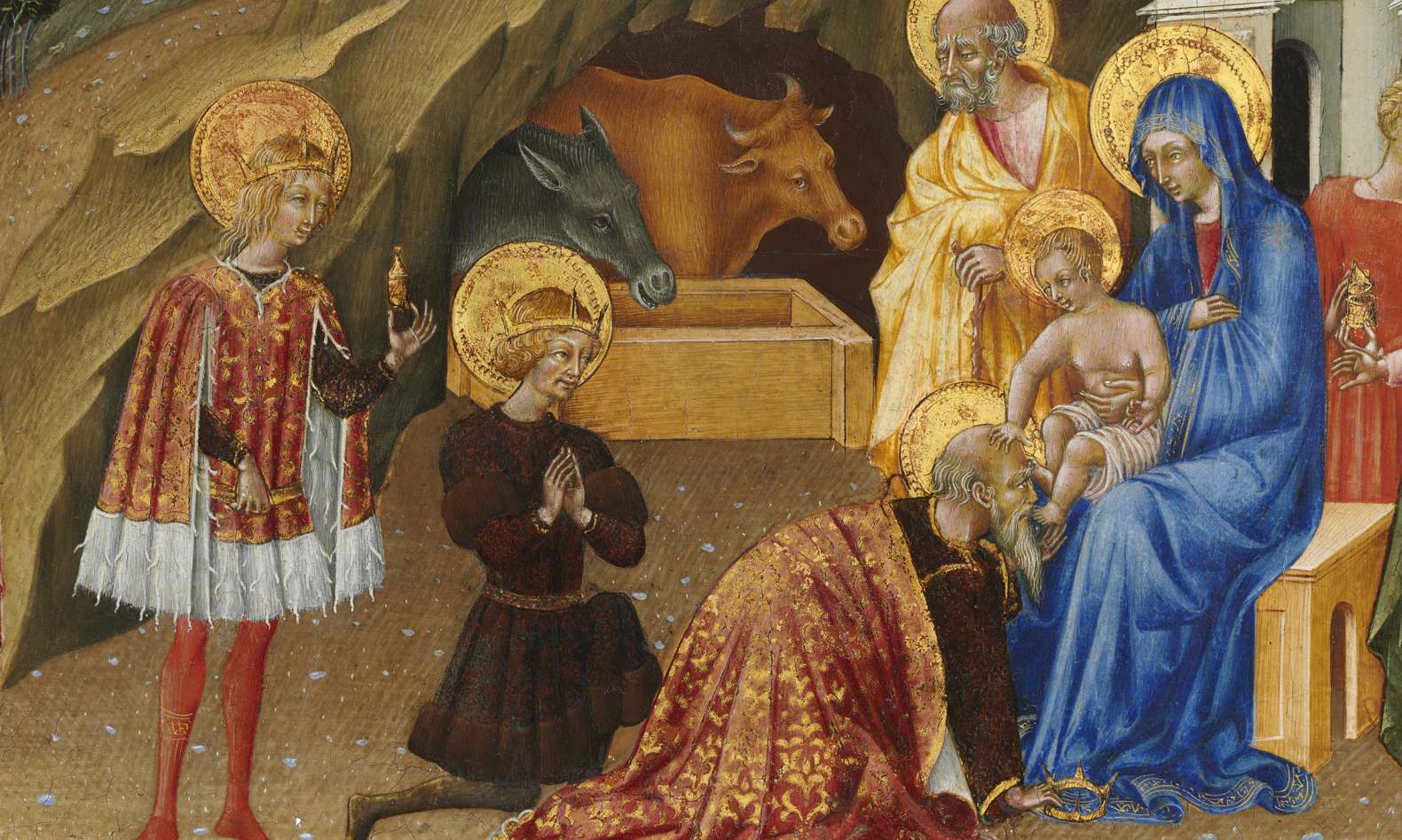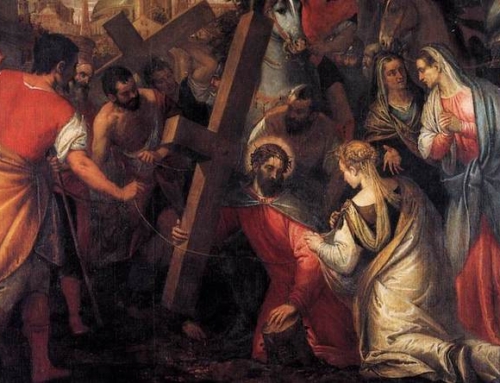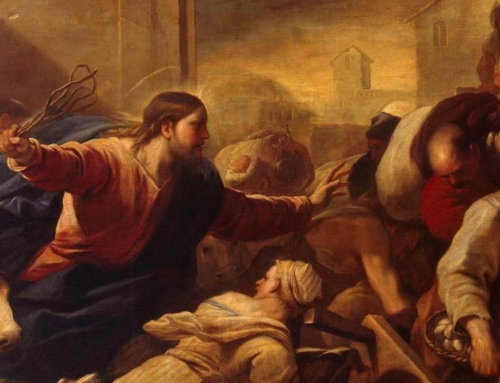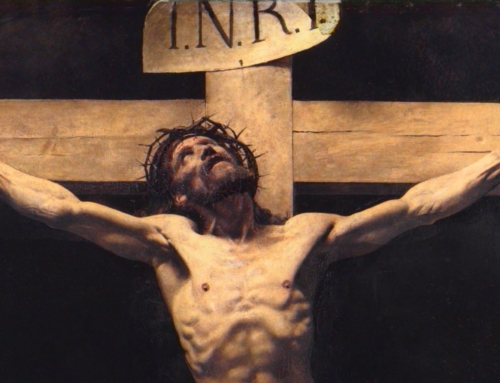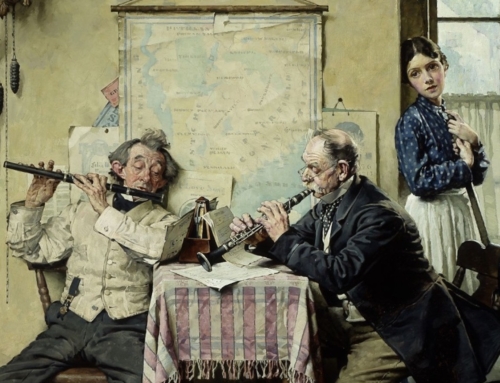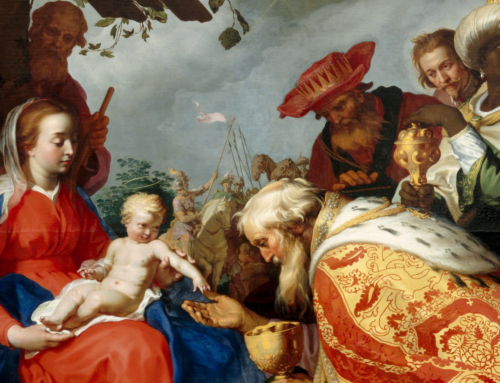The Sights and Sounds of Christmas:
Adoration of the Magi by Giovanni di Paolo, c. 1450
Why does Mary leave Baby Jesus lying on the rocky ground in so many paintings of the Nativity? When I found Jesus lying on the hem of Mary’s cloak, propped up on hay, or in the midst of disintegrating pagan Rome, I had to ask: what were the artists up to?
The artists had no need to go to great lengths to affirm the humanity of the Christ Child. A chubby face, fingers and hands, little toes on a tiny foot—definitely a human child. Rather, they desired to express what faith alone affirms is true: God was born in the flesh and lived among us. How did they do this? By depicting acts of worship. In all of these paintings, we find Mary as if at Eucharistic adoration before her son. What’s important is the act of faith that the piece of art stirs up in the soul of the beholder: this human child is the Son of God; I too should worship him.
We worship God alone. Reverence is paid to Mary and the saints due to their high participation in God’s grace, but worship is reserved for the Godhead. In Jesus Christ, divinity and humanity are joined inseparably and without mixture in one person. In encountering his humanity, we encounter his divinity, for his human nature is inseparable from who he is—the Son of God. These works of art strive to awaken the viewer to the reality of Christ’s divinity so that the viewer might become a worshipper of Christ in faith.
Depictions of the magi also capture the turning to Christ in his divinity through his humanity. Take a look at Giovanni di Paolo’s Adoration of the Magi. What strikes you?
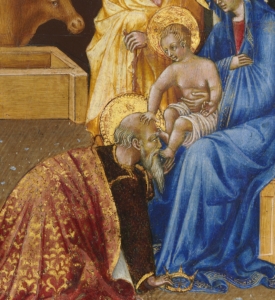
The first instinct of the wise men was not to ask Mary to hold the child and cuddle him in their arms. Rather, “on entering the house they saw the child with Mary his mother. They prostrated themselves and did him homage” (Mt 2:11). The magi were not interested in seeing any baby whatsoever, or even any king. As Saint Augustine says, “though many kings of the Jews had been born and died, none of them did the magi seek to adore.” They desired God, and in faith they knew that they would encounter God in this little child: “They had learnt that such a king was born that by adoring him they might be sure of obtaining from him the salvation which is of God” (quoted in ST III q. 36, a. 8, ad 1). The Christ Child’s humanity was evident, and by their act of faith expressed visibly in worship, the magi attested to his divinity.
In Blessed Fra Angelico’s Adoration of the Magi, we enter into the mystery of the Incarnation in a similar way. Take a look at the tender reverence with which the eldest of the magi touches the foot of the Christ Child.
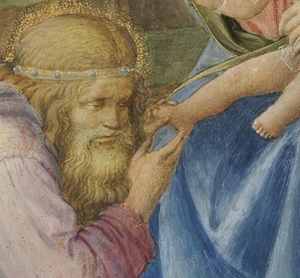
He reaches out almost hesitantly, it seems, humbled with awe at touching God in the flesh. His gaze is unwavering, concentrating on the child’s foot, in faith contemplating the wonder of God become man. Saint John Chrysostom writes,
If the magi had come in search of an earthly king, they would have been disconcerted at finding that they had taken the trouble to come such a long way for nothing. Consequently, they would have neither adored nor offered gifts. But since they sought a heavenly king, though they found in him no signs of royal pre-eminence, yet, content with the testimony of the star alone, they adored: for they saw a man, and they acknowledged a God. (quoted in ST III q. 36, a. 8, ad 4)
It is only in faith that one acknowledges God, and it is faith that Fra Angelico desires to inflame in those who view his art.
If you can’t make it to the National Gallery of Art in Washington, you can still contemplate Baby Jesus in your nativity scene at home. Reach out and touch his foot, and in your heart make an act of faith: “I believe in one Lord Jesus Christ, the Only Begotten Son of God, who for us men and our salvation came down from heaven, and by the Holy Spirit was incarnate of the Virgin Mary, and became man.” Faith brings us into living contact with the mystery of the Incarnation, and in that mystery we are saved by being made like him whom we touch in faith.
We must train ourselves by frequent acts of faith to see in the Christ Child not only the cute babe to be cuddled in our arms, but the Son of God whom we worship in our hearts by faith.
✠
Image: Giovanni di Paolo, Adoration of the Magi

